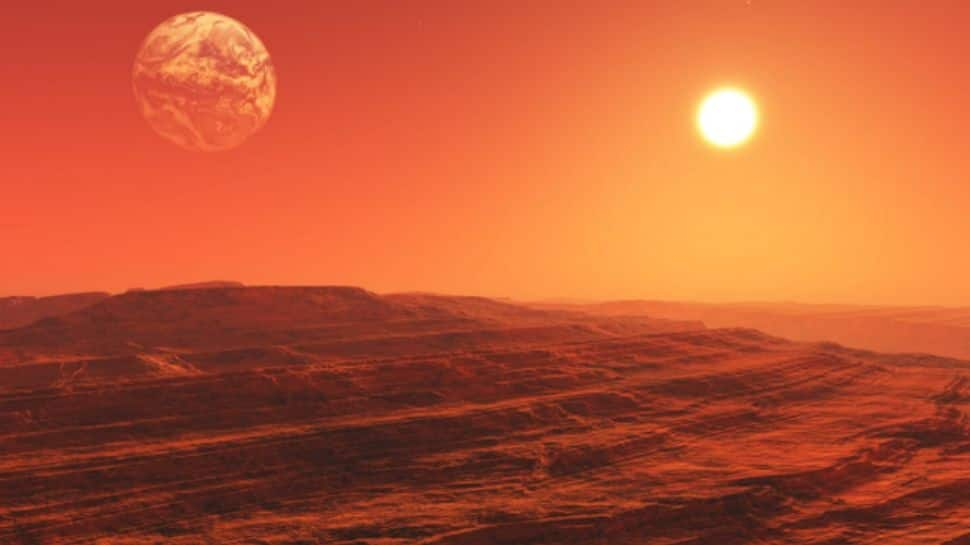Studying winds on Mars is very difficult. On Earth, we can easily use weather balloons or satellite tools to measure wind directly. But on Mars, there are very few places where scientists can put instruments — and the air on Mars is extremely thin. Because of this, getting correct wind data on Mars becomes a big challenge.
Rovers and landers on Mars can measure wind speed only where they are located — they cannot check winds across the whole planet. So to understand Mars better, scientists use pictures taken from satellites orbiting Mars and use advanced data analysis to study how winds move everywhere, reports Bgr.com
In a new discovery, scientists from the University of Bern, led by Dr Valentin Bickel, used deep-learning (AI based method) to study more than 50,000 satellite images taken by special cameras on two Mars missions — CaSSIS (Colour and Stereo Surface Imaging System) which is a camera on the ExoMars Trace Gas Orbiter, and HRSC (High Resolution Stereo Camera) which is a camera on the Mars Express spacecraft. These cameras take detailed pictures of Mars from above to help scientists understand wind patterns better.
Add Zee News as a Preferred Source
The machine-learning system was able to find dust devils on Mars. These are rotating columns of dust and air that move on the surface. They help scientists because they show where the invisible wind is actually going. After finding these dust devils, scientists selected around 300 of the best 3D image sets and studied them in detail. From these, they could track how the dust devils moved, measure their speed, and understand the direction of the winds blowing across Mars.
The results shocked scientists. Earlier rover measurements showed winds on Mars were usually below 48 km/hour and rarely went up to 96 km/hour. But with this new global study from satellite data, scientists found that dust devils near the surface can reach up to around 160 km/hour. These high wind speeds were found in many parts of Mars — not just in a few places. This shows that such strong winds are more common on Mars than scientists believed earlier.
Why is this important? Because strong winds lift more dust from the surface — and this dust controls a big part of Mars’ climate. So, stronger winds change how Mars behaves overall. The dust on Mars absorbs sunlight and helps warm the atmosphere. This affects temperature, movement of air, and even storm formation. Also, using deep neural networks (advanced AI) along with satellite images, scientists have now created a new way to study and map wind patterns across the whole planet.
Understanding winds on Mars is not only for science interest. It is very useful for future landers, rovers and even human missions, because knowing wind behavior will help make landings safer and planning easier. Good knowledge about wind conditions on Mars helps mission planners make safer landing plans, design stronger equipment, and plan better solar power systems that can work even during dusty conditions.
In the future, scientists must carefully consider winds and flying dust on Mars while planning human missions, because these factors can affect safety, equipment and power systems. Everything on Mars can be affected by surface conditions like wind and dust — including living habitats, power systems, machines that extract resources on Mars, and vehicles used for movement. Dust is a big problem for missions on the surface of Mars. It can settle on solar panels and reduce power, it can block scientific instruments, and it can also damage moving parts in machines over time.
The Opportunity rover experienced this problem in 2018 during a global dust storm on Mars. The dust blocked sunlight for many days, and the rover could not get enough power, which caused the mission to stop. By knowing when and where strong winds and dust devils form, scientists can predict dust dangers in advance and plan cleaning methods or other ways to reduce problems.
Landing site selection and hardware design can benefit from wind maps created using satellite data. The new list of dust-devil tracks and estimated wind direction/speed, reports BGR.com, made by the University of Bern team will give future mission planners data-based information about wind conditions at possible landing places on Mars.
This information helps engineers predict how wind will impact landings, how dust will move in the landing area, and how often dust may settle on solar panels or cameras. In the end, this new way of studying Mars winds using machine learning and dust-devil tracking will keep creating more data in the future. This will help scientists make better climate models and improve mission planning tools for Mars.
The research team said that by taking more focused images of dust devils and using 3D imaging, the wind maps of Mars will become more detailed and clearer in the future. The more we understand how winds behave on Mars, the better we can make accurate models of surface conditions. This is very important for mission safety, performance, and long-lasting equipment.
(Girish Linganna is an award-winning science communicator and a Defence, Aerospace & Geopolitical Analyst. He is the Managing Director of ADD Engineering Components India Pvt. Ltd., a subsidiary of ADD Engineering GmbH, Germany.)



